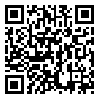Fri, Jun 27, 2025
[Archive]
Volume 1, Issue 1 (12-1992)
J Adv Med Biomed Res 1992, 1(1): 20-29 |
Back to browse issues page
Download citation:
BibTeX | RIS | EndNote | Medlars | ProCite | Reference Manager | RefWorks
Send citation to:



BibTeX | RIS | EndNote | Medlars | ProCite | Reference Manager | RefWorks
Send citation to:
Mortazavi Y. Evaluation of diabetes mellitus in patients with beta thalassemia major. J Adv Med Biomed Res 1992; 1 (1) :20-29
URL: http://journal.zums.ac.ir/article-1-690-en.html
URL: http://journal.zums.ac.ir/article-1-690-en.html
Abstract: (155293 Views)
Thalassemia major is hereditary anemia characterized by deficient synthesis of hemoglobin. To compensate for anemia, patients should receive blood regularly and because of iron overload and siderosis, multiple lesions such as endocrine lesions happen. Accordingly, pancreatic lesions and diabetes mellitus were studied. A group of 140 thalassemic patients and 13 healthy subjects were selected and Oral Glucose Tolerance Test (OGTT) was done, during which fasting insulin was measured also.
In this process, 4 patients with overt diabetes were discovered. One of these patients showed decreased insulin secretion and 3 others an increase in response to glucose administration. Peak response appeared within 30 minutes after the oral glucose tolerance test and other was no difference between patients and the control group (P>0.05). A considerable difference between the two groups was observed in 0, 60,120 and 180 minutes (P<0.05), and the patient's blood glucose showed an obvious increase.
Basic insulin secretion was similar in both groups (24±8), but during the periods in times 30, 60, 120, and 160 minutes after OGTT there was a mild difference and insulin secretion decreased. There was ab abnormal tolerance test in thalassemic patients.
No special correlation between iron overload and abnormal insulin secretion was observed, which means that functional insufficiency of pancreatic B-cell leads to diabetes mellitus. During OGTT some patients showed reactive hypoglycemia and in others, chemical diabetes was seen.
In general, it is concluded that the appearance of diabetes is because of:
1)Pancreatic B-cell insufficiency
2)Resistance to insulin
3)Both factors together
In order to prevent diabetes, these patients should receive desferrioxamine SC according to Dose-Response curves regularly and their blood glucose checked with GTT being carried at every other time.
In this process, 4 patients with overt diabetes were discovered. One of these patients showed decreased insulin secretion and 3 others an increase in response to glucose administration. Peak response appeared within 30 minutes after the oral glucose tolerance test and other was no difference between patients and the control group (P>0.05). A considerable difference between the two groups was observed in 0, 60,120 and 180 minutes (P<0.05), and the patient's blood glucose showed an obvious increase.
Basic insulin secretion was similar in both groups (24±8), but during the periods in times 30, 60, 120, and 160 minutes after OGTT there was a mild difference and insulin secretion decreased. There was ab abnormal tolerance test in thalassemic patients.
No special correlation between iron overload and abnormal insulin secretion was observed, which means that functional insufficiency of pancreatic B-cell leads to diabetes mellitus. During OGTT some patients showed reactive hypoglycemia and in others, chemical diabetes was seen.
In general, it is concluded that the appearance of diabetes is because of:
1)Pancreatic B-cell insufficiency
2)Resistance to insulin
3)Both factors together
In order to prevent diabetes, these patients should receive desferrioxamine SC according to Dose-Response curves regularly and their blood glucose checked with GTT being carried at every other time.
Type of Study: Original Research Article |
Received: 2008/11/30 | Accepted: 1992/12/15 | Published: 1992/12/15
Received: 2008/11/30 | Accepted: 1992/12/15 | Published: 1992/12/15
| Rights and permissions | |
 |
This work is licensed under a Creative Commons Attribution-NonCommercial 4.0 International License. |




